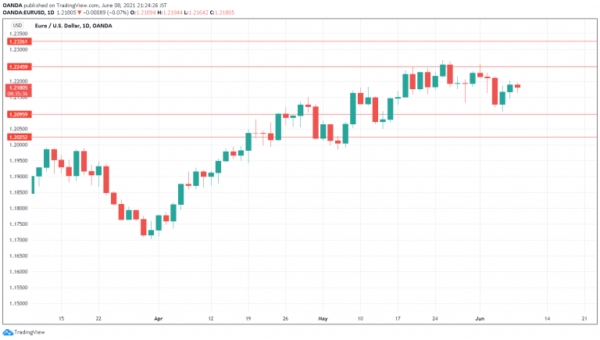The euro is down slightly on Tuesday, putting the brakes on a two-day mini-rally. In the North American session, EUR/USD is trading at 1.2173, down 0.13% on the day.
Eurozone data has been a mixed bag this week. On the positive side, eurozone growth was revised upwards in the first quarter, from -0.3% to -0.6% in the initial estimate. On an annualised basis, GDP declined -1.3%, after contracting -1.8% in the fourth quarter. Although the economy is showing signs of improvement, the back-to-back declines indicate that technically, the eurozone is in a recession. Still, with the easing of health restrictions and the acceleration of the vaccine rollout, there is growing optimism that the economy will improve further in the coming months.
Financial experts remain optimistic about economic conditions. The Sentix Investor Confidence index climbed to 28.1, above the estimate of 25.5 and its best reading since February 2018.
Now for the not-so-good news. German Industrial Production declined -1.0% m/m, down from 2.2% and missing the forecast of +0.5%. This came on the heels of a disappointing Factory Orders release, as the reading of -0.2% fell short of the consensus of +0.4%. As well, the ZEW Economic Sentiment slipped to 79.8, down from 84.4 and shy of the forecast of 86.0 points. The Eurozone Economic Sentiment slowed from 84.0 to 81.3, but beat the consensus of 77.0.
With this mixed data behind us, investors will be closely attuned to the ECB policy meeting on Thursday. ECB President Christine Lagarde recently said that it is premature to consider tapering the massive stimulus program. The central bank will likely maintain its dovish stance at the meeting, but investors will be looking for clues as to when the ECB might begin discussions about tapering.
EUR/USD Technical
- On the upside, 1.2245 has held in resistance since June 1. Above, there is resistance at 1.2325
- There is support at 1.2095, followed by 1.2025















